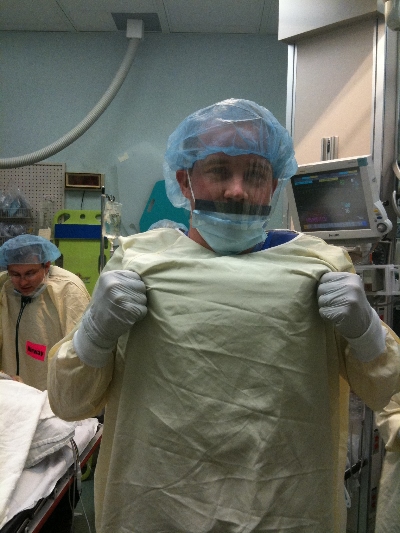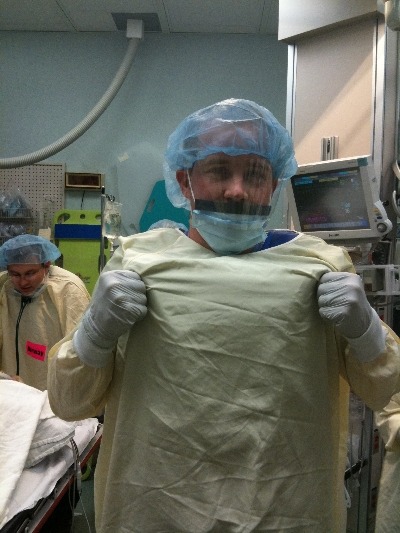Okay, I’ve written about the lead gown pull-up several times. Here’s how it goes:

I wrote in some detail about when this is necessary for thyroid and thymus protection and how much radiation exposure the trauma team actually gets.
But recently I’ve noticed some members of my own trauma team failing to wear the lead aprons, AND leaving the room when x-rays are taken!
Here’s the thing. Yes, it is important to shield yourself when working in proximity to the x-ray machine when in use. But no, leaving the room is not an acceptable way of accomplishing this! The patient is relatively less attended, and by definition less gets done while several of the team members are outside the room waiting for x-the ray tech to shoot.
Here’s my solution: I make a special announcement as part of the team pre-briefing (before patient arrival) that the lead gown is part of their personal protective equipment (PPE). It is also expected that everybody wears appropriate shielding. We already have a rule that every member of the trauma team MUST wear PPEs or they can’t enter the resuscitation room. And I follow it up by announcing my new rule: if anyone leaves the room because they don’t have proper PPEs, they will not be allowed back in the room.
Works like a charm!
Related post:

